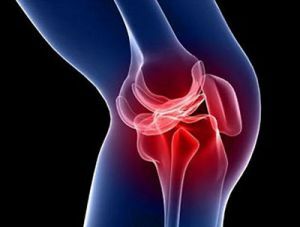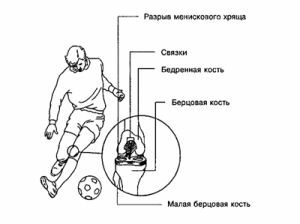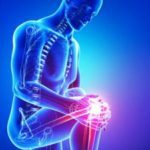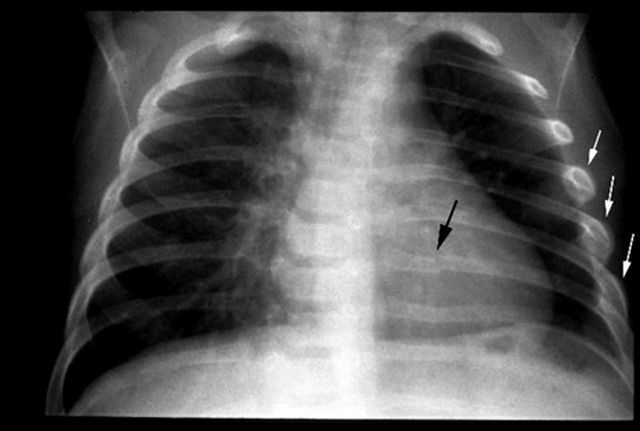 The knee joint is one of the largest in the human body. It differs in a rather complex structure and includes many cartilages and ligaments.
The knee joint is one of the largest in the human body. It differs in a rather complex structure and includes many cartilages and ligaments.
Along with this in the composition of this part of the body there are few soft tissues that could protect it from damage.
This is why knee joint injuries are diagnosed quite often, and one of the most common injuries is the meniscus rupture.
Article Contents
- structure of the meniscus
- Classification damage
- reasons gap
- Symptoms injury
- Diagnostics
- damage Comprehensive treatment
- Conservative
- therapy Surgery
- meniscectomy or removal of the meniscus
- repair a torn meniscus
- Arthroscopy
- transplantation meniscus
- Bond meniscus special holders
- Rehabilitation
- Prevention
The structure of the meniscus
Meniscus is a cartilaginous imageCrescent shaped. It is located between the shin and thigh and is a kind of lining between the articular ends of the bones.
Meniscus
performs a number of functions, the main one of which is motion damping and protection of the articular cartilage .In addition, it performs a stabilizing function, which is aimed at increasing the mutual correspondence of all articular surfaces in contact with each other. Also, the meniscus helps to significantly reduce friction in the joints.In the knee joint, there are two meniscus :
- outer;
- internal.
The outer meniscus is more mobile, and therefore it is much less damaged than the internal one.
Certain features have a blood supply to the meniscus. The fact is that in newborn children all their tissue permeated by blood vessels, but already at nine months from the inside of the vessels completely disappear. As you grow, the blood supply to the meniscus worsens. From this point of view, two zones are distinguished: white and red.
Damage classification
distinguishes such varieties of the knee joint meniscus:
- Detachment from the attachment site. This may occur around the body of the meniscus in the paracapsular area or in the area of the anterior and posterior horns.
- Discontinuities of the body of the meniscus. This can occur in the transchondral area, as well as in the region of the hind and anterior horns.
- All possible combinations of such damages.
- Excessive movement of the meniscus .It can be a degeneration of the meniscus or rupture of its ligaments.
- Chronic degeneration or trauma of the meniscus , cystic degeneration.
Meniscus tears also can have several varieties of :
- longitudinal;
- transverse;
- flap-shaped;
- crushed.
In terms of complexity, has complete and incomplete breaks.
Causes of rupture of
This is a fairly common phenomenon, and this injury is usually received by people who are involved in the sport of - skiers, tennis players, figure skaters, football players.  Typically, such damage occurs in people aged 18-40 years, and men are more likely to be affected by women. In children younger than 14 years, meniscus tears are rare, which can be explained by the anatomical features of their body.
Typically, such damage occurs in people aged 18-40 years, and men are more likely to be affected by women. In children younger than 14 years, meniscus tears are rare, which can be explained by the anatomical features of their body.
Sometimes a break in the meniscus occurs without injury to .Most often this is observed with the development of inflammation or degenerative processes in the knee joint. Often, this is due to arthrosis. Sometimes traumatic injuries of menisci are accompanied by rupture of ligaments and other injuries of the knee joint.
Symptomatic of injury
Symptoms of , characteristic of knee joint meniscus damage at the initial stage of the disease development: nonspecific inflammation, severe cramping in movements, local pain sensations, presence in the blood cavity or exudate.
Already after 2-3 weeks, these manifestations disappear and symptoms appear that are specific to the meniscus injury:
- Local soreness.
- Presence of effusion.
- Infiltration of the capsule.
- Tumor soreness in the region of the joint space.
- Fixed joint, which is associated with a pinching of the meniscus.
- Character click when bending the joint.
- Increased temperature in the area of the affected joint.
- Atrophy of the muscles of the thigh and lower leg - occurs in some cases.
Chronic form of the disease is observed in case of systematic damage to the meniscus. In this case there are no clearly expressed signs. Sometimes:
- pains in the region of the joint space;
- synovitis;
- atrophy of the quadriceps femoris muscle.
To confirm damage to the meniscus, it is possible to perform various tests on the :
- Baykov Symptom - pain sensations appear when pressing on the joint slit while flexing the knee bent at right angles.
- Land's symptom - pain appears when trying to sit down "in Turkish."
- Symptom of Steinman - painful sensations arise in a bent at right angles to the knee when performing rotational movements.
- Symptom Polyakova - the pain appears in the position on the back with a raised healthy leg and an elevated trunk, while the patient must rely on the heel of the injured leg and shoulder blade.
- Symptom of McMurray - painful sensations are amplified by rotating the leg bent at right angles to the outside or inside. Due to this, it is possible to judge the trauma of the medial or lateral meniscus.
- The Turner symptom is a decrease or increase in sensitivity in the region of the inner surface of the knee.
- Symptom Perelman - the appearance of pain when descending the stairs.
- Symptom of Chaklin is the tension or flattening of the sartorius muscle during the extension of the shin.
 The doctors recommended diet for knee arthritis is described in detail in our article. Also in the material are other recipes of folk medicine in the fight against arthritis of the knee.
The doctors recommended diet for knee arthritis is described in detail in our article. Also in the material are other recipes of folk medicine in the fight against arthritis of the knee.
To avoid trouble you need to know what to do with a leg dislocation. How is first aid and the subsequent treatment you can find here.
Symptoms of rupture of the medial and lateral meniscus of the knee joint also have some differences. So, the signs of traumatization of the medial meniscus include:
- intense pain sensations from the inside of the joint;
- point pain when pressing into the place of attachment of the ligament to the meniscus;
- painful sensations with strong bending of the foot;
- "knee block";
- pain when turning the shin outwards.
Symptoms of traumatization of the lateral meniscus include:
- pain in the outer part of the body arising from knee tension;
- pain when turning the shin to the inside;
- muscle weakness in the anterior part of the thigh.
Damage Diagnostics
 Only the doctor can diagnose the diagnosis correctly. Before carrying out the research, the specialist should ask about all the symptoms and perform an examination of the knee joint and legs. Then the doctor examines the joint for fluid accumulation and checks for muscle atrophy.
Only the doctor can diagnose the diagnosis correctly. Before carrying out the research, the specialist should ask about all the symptoms and perform an examination of the knee joint and legs. Then the doctor examines the joint for fluid accumulation and checks for muscle atrophy.
An experienced trauma specialist based on these data will be able to diagnose with an accuracy of 95%.However, in order to get 100% confidence, it is necessary to undergo additional tests:
- radiography;
- ultrasound;
- magnetic resonance imaging.
With the development of any unpleasant sensations in the joint area, x-rays are necessarily performed - this is the simplest and most accessible method of investigation. In more complex situations, magnetic resonance imaging is prescribed - it allows, in addition to the joint, to check the periarticular formations.
Complex treatment
Conservative therapy
. Independently of the severity of the injury, the victim needs first aid. For this, the patient should provide complete rest, apply a cold compress and elastic bandage to the knee joint area. To prevent or remove swelling, you need to lay your foot just above the chest level.
Conservative methods of in the treatment of rupture of the knee joint meniscus include the use of non-steroidal pain relievers. These include ibuprofen, meloxicam, diclofenac .
To restore cartilaginous tissue, chondoprotectors are required - they help improve metabolic processes in regenerative tissue. These drugs include chondroitin sulfate and glucosamine. To increase the water-holding characteristics of the cartilage and prevent inflammation, a biologically active collagen ultra supplement can be prescribed.
For grinding, various ointments - ketoral, alesan, voltaren, dolgite are used. If pain and limited mobility are observed, Ostenil can be administered into the joint bag.
Operative intervention
Indications for the operation when the meniscus of the knee joint are:
- Breaking and displacement of the meniscus.
- Blood in the cavity.
- Crushing the meniscus tissue. Separation of the body and horns of the meniscus.
- No effect of drug treatment for several weeks.
In such situations, surgery can be prescribed, which is performed by in different ways:
Meniscatectomy or meniscus removal
This operation is indicated when a large part of the meniscus is broken, the cartilage tissue decomposes, and complications develop. This procedure refers to a rather traumatic and leads to the elimination of pain only in 50-70% of cases.
Meniscus recovery
If possible, surgeons try to keep the meniscus as far as possible. Recovery is possible in the following situations:
- tearing the meniscus off the capsule;
- longitudinal vertical rupture;
- peripheral rupture of the meniscus;
- no degenerative processes in the cartilaginous tissue;
- is a young age.
Successful operation depends on the prescription and location of the gap. The localization of the lesion in the red or intermediate region and the age of the patient up to 40 years increase the probability of a successful outcome.
Arthroscopy

On the photo MRI of a damaged knee joint meniscus
This method is considered the most modern and the least traumatic. During the procedure, using an arthroscope, visualize the injury site and perform the operation. This method can be used for ruptures of the body or anterior horn of the meniscus. Read more about it.
Approximately 70-85% of cases of cartilaginous tissue fully fused, and the knee joint restores its functions.
Meniscus transplantation
Indications for such an operation when a knee joint meniscus is broken is a crushing of the meniscus and a significant deterioration in the quality of life of a person. In this contraindication to transplantation are: elderly age, knee instability, degenerative processes, obscheomaticheskimi diseases.
Securing the meniscus with special locks
With this procedure, it is possible to fix the meniscus without performing additional incisions. For this, absorbable fixatives of the first or second generation are used.
Rehabilitation
Of no small importance is the rehabilitation period after the injury. It includes :
- Perform special exercises for knee joint development.
- Use of hondoprotectors and non-steroidal anti-inflammatory drugs.
- Massage, physiotherapy.
- No stress for a year.
Rehabilitation after such injury includes five stages:
- 1 stage - its duration is 4-8 weeks. At this stage, you need to try to maximize the range of motion in the injured joint, reduce swelling.
- 2 stage - lasts about 2.5 months. It is necessary to completely restore the motor activity, eliminate puffiness, begin to train weakened muscles.
- 3 stage - it is necessary to completely restore the motor activity in sports, to restore the strength of muscles. At this stage, actively engaged in physical therapy and return to normal life.
- 4 stage - it is necessary to achieve the opportunity to actively engage in sports without pain, and also to increase the strength of the muscles of the injured leg.
- 5 stage - should restore all the functions of the joint.
Prevention
In order to prevent the from breaking the meniscus , it is necessary to use special knee pads during sports activities - this will help minimize the risk of injury.
It is also recommended that perform special exercises of , which will help strengthen muscle strength, take chondoprotectors and drugs that improve peripheral circulation.
Meniscus rupture is a fairly common injury of the knee joint, which significantly impairs the quality of life of a person. Therefore, for any damage it is worth to contact an experienced traumatologist - he will be able to make the correct diagnosis and choose the treatment.



